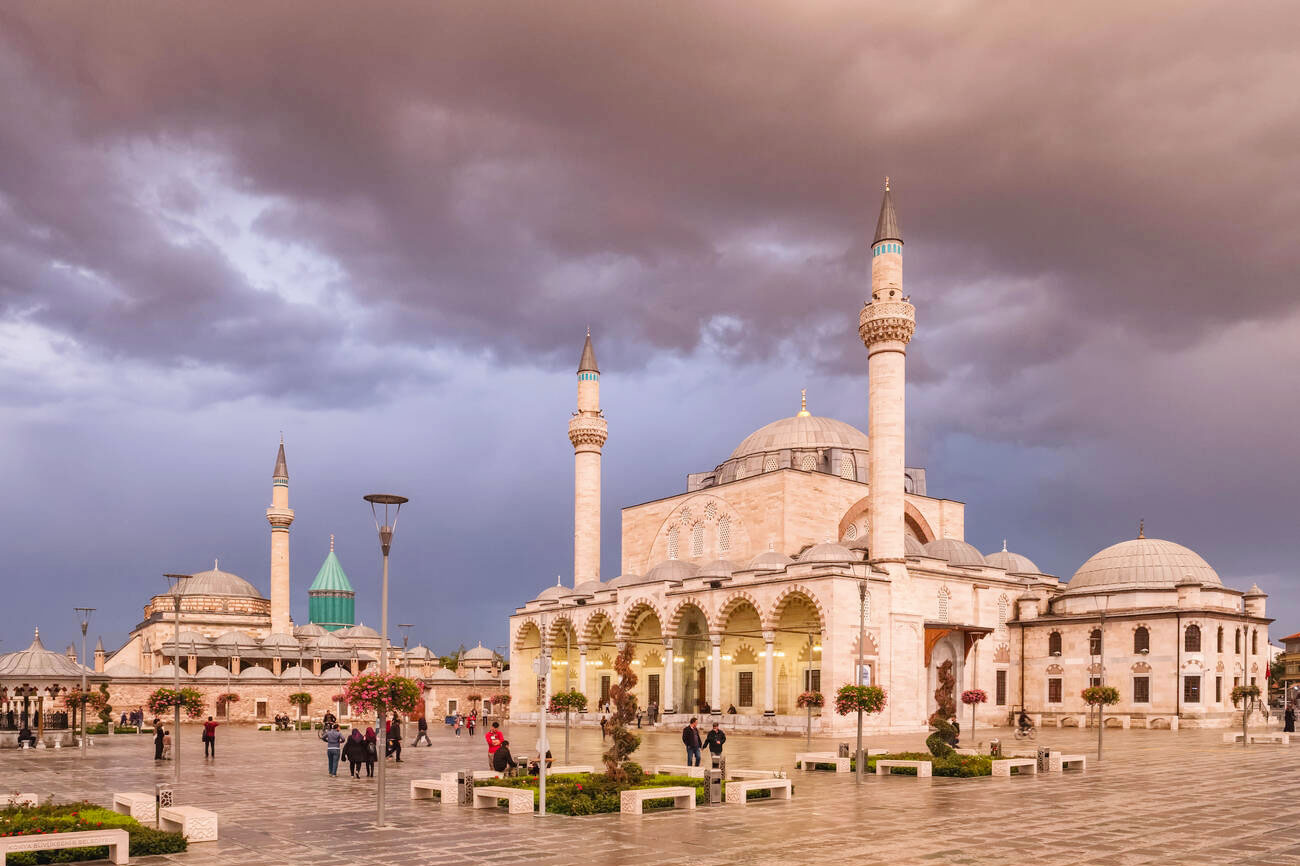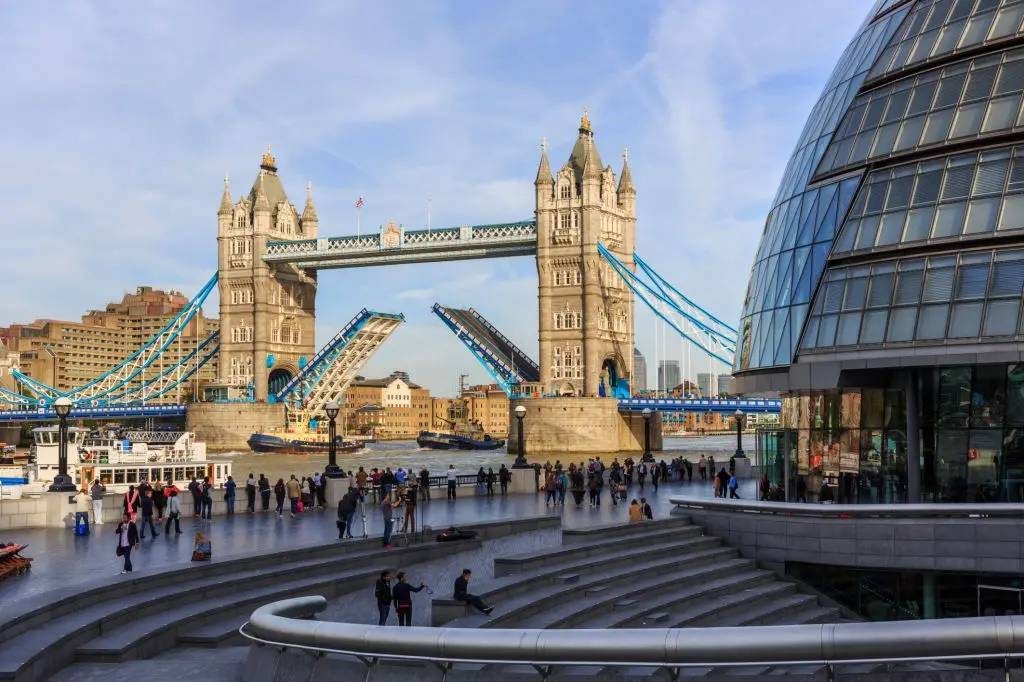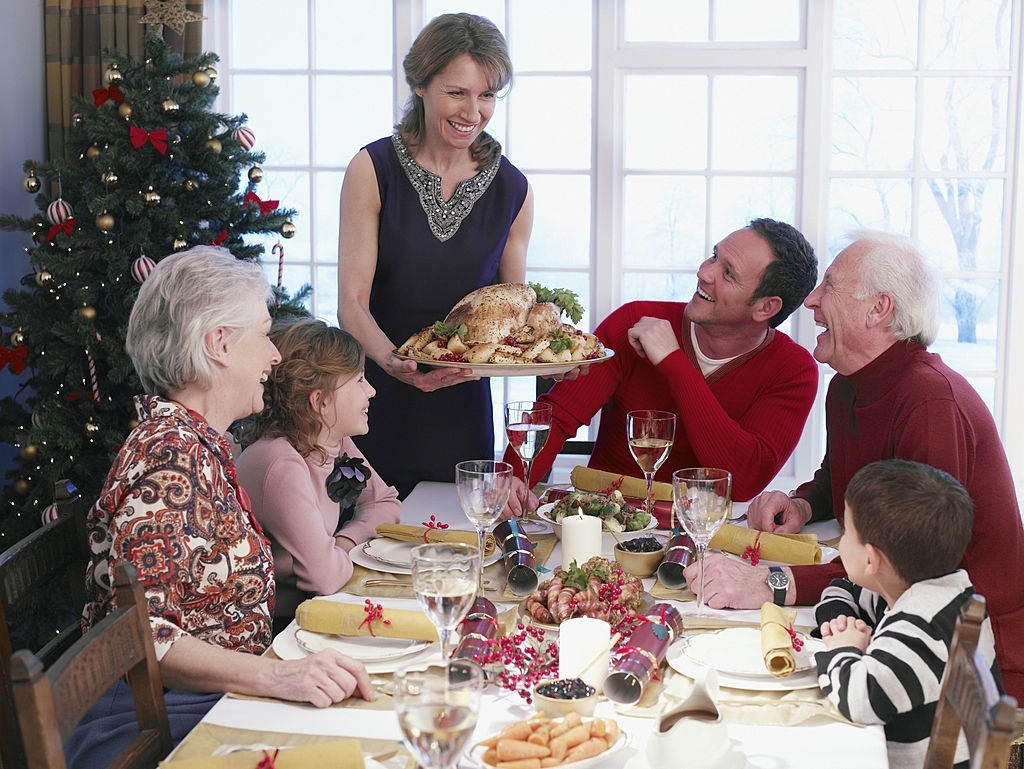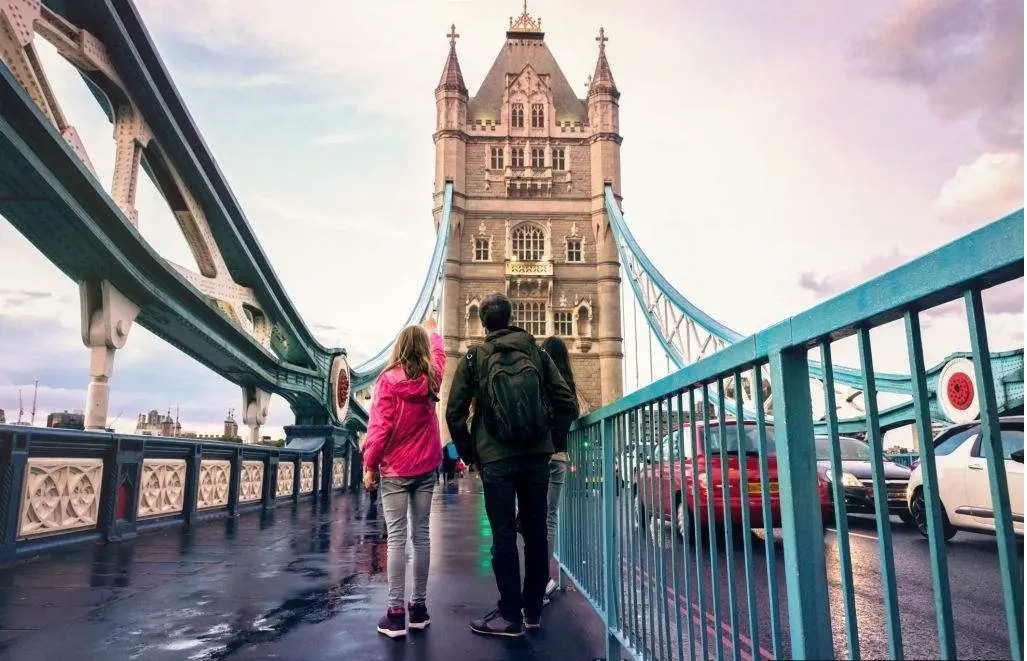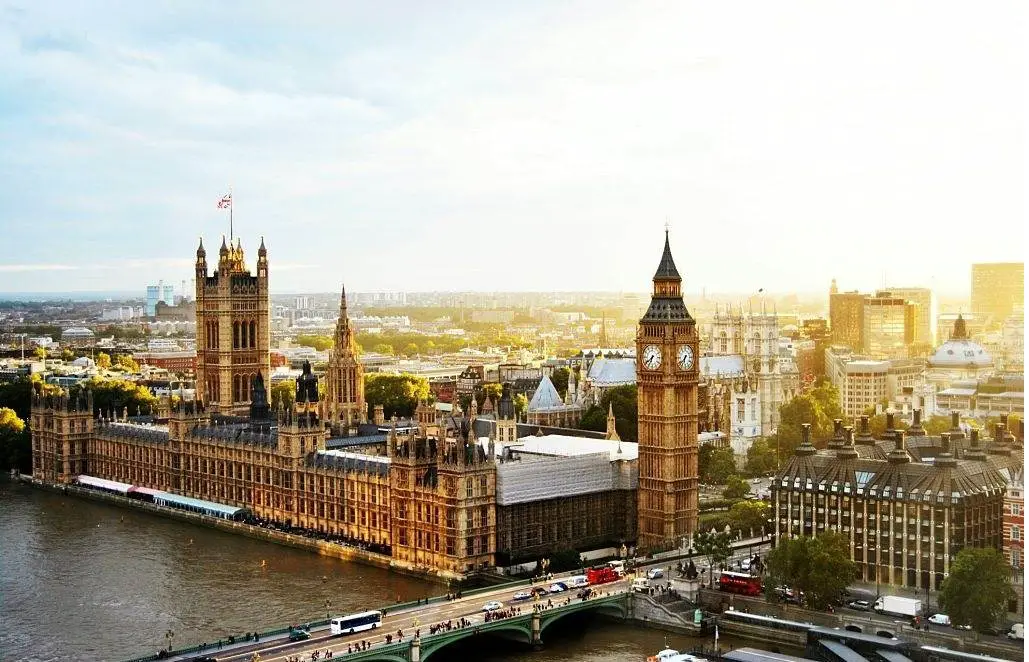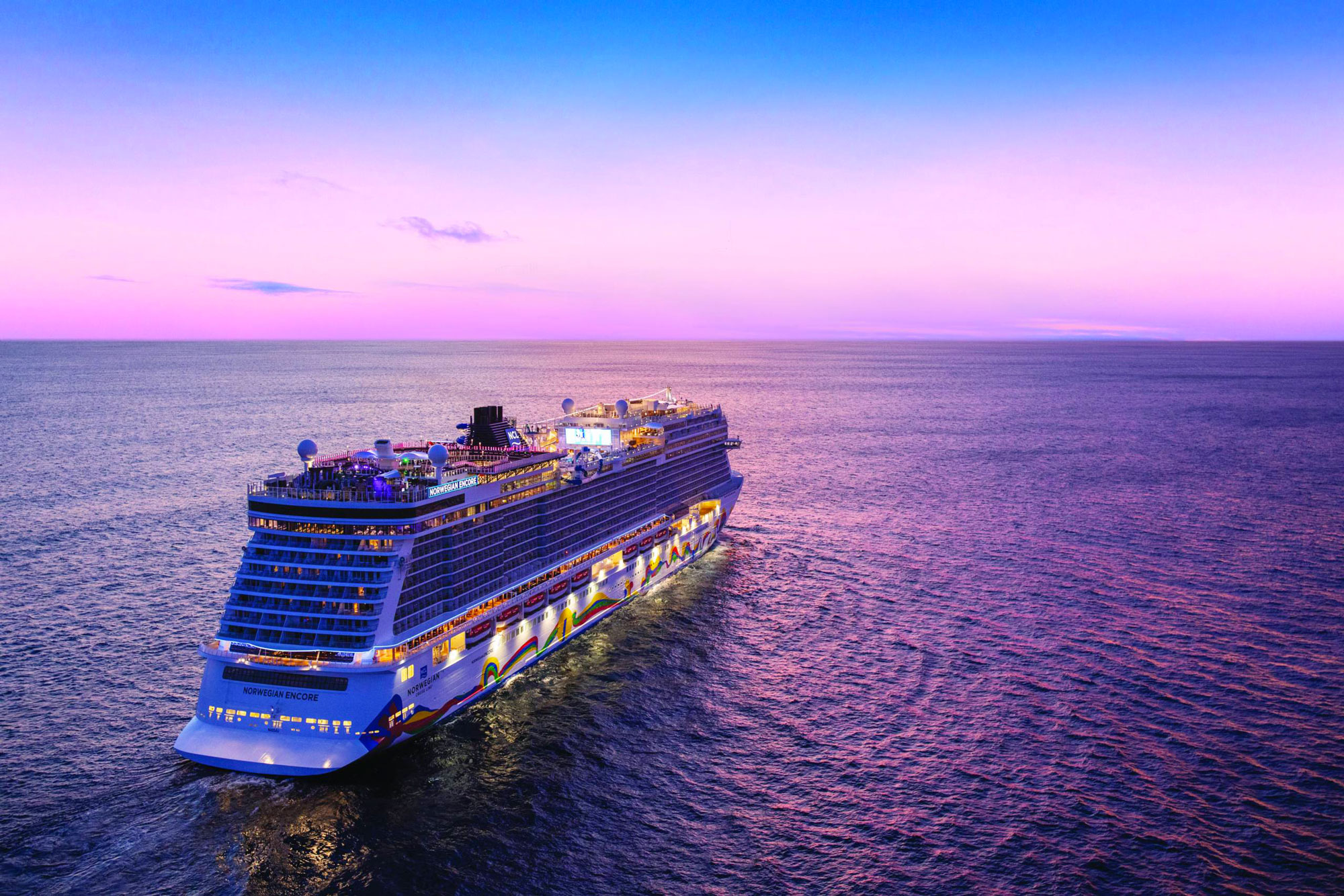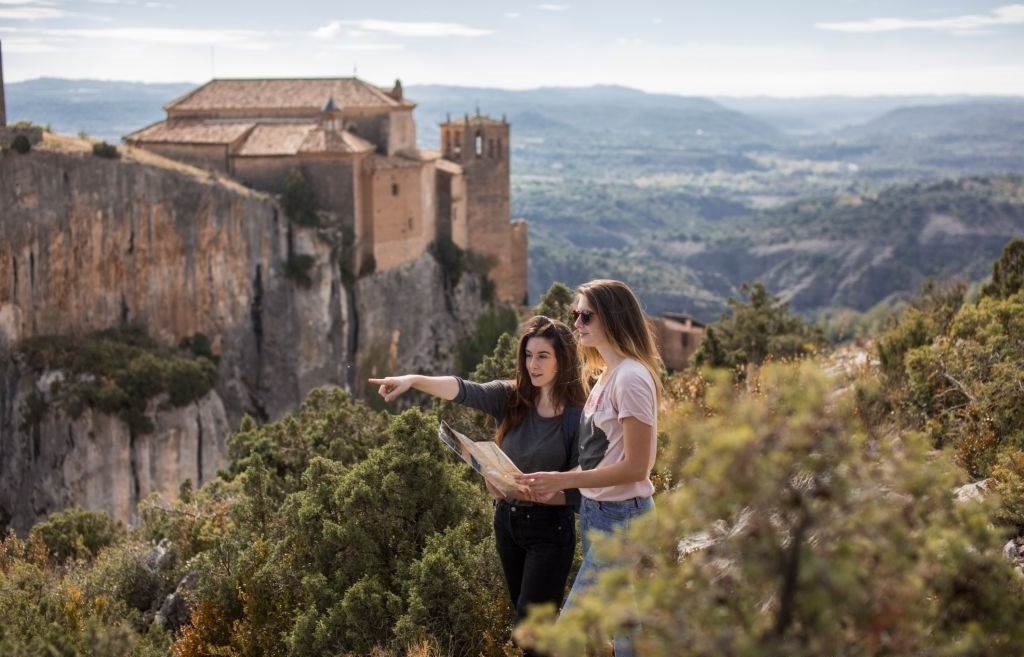Summary
- Konya's Rich Heritage: Known for its spiritual and cultural significance, Konya is the birthplace of poet Rumi and home to Whirling Dervishes ceremonies.
- Best Times to Visit: Spring offers mild weather and vibrant festivals, while fall features stunning foliage and fresh market produce; winters offer intimate, less-crowded experiences.
- Must-See Attractions: Highlights include the Mevlana Museum, Alaeddin Mosque, and Sille Village, offering a mix of spirituality, architecture, and local traditions.
- Culinary Delights: Konya’s cuisine features iconic dishes like Etli Ekmek and Tandir Kebab, as well as vibrant street food and culinary workshops for food enthusiasts.
- Travel Tips: Respect local customs, dress modestly, and use apps for navigation and transportation. Konya’s friendly locals enhance its charm for visitors.
When you think of Turkey, cities like Istanbul or Cappadocia may come to mind, but Konya offers a unique glimpse into the country’s rich spiritual and cultural heritage. Known as the birthplace of the famed poet Rumi and the center of the Whirling Dervishes, Konya is a city where history, spirituality, and tradition intertwine beautifully. For travelers seeking an authentic Turkish experience, understanding the nuances of Konya can enhance your journey. This guide will equip you with essential tips, from the best times to visit local customs and must-see attractions.
Visit at the Best Time: Konya’s Climate
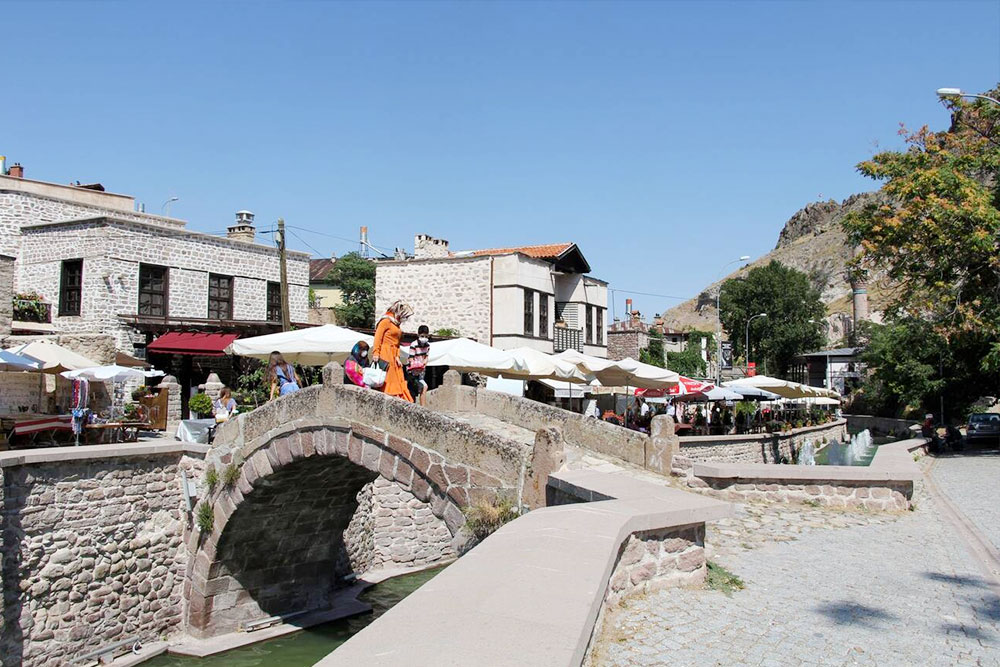
Choosing the right time to visit Konya is essential for maximizing your experience in this culturally rich city. Konya experiences a continental climate characterized by hot, dry summers and cold, snowy winters. This unique climate affects not only the weather conditions but also the overall travel experience, including local events, festivals, and the availability of outdoor activities.
- Spring (April to June)
Spring is arguably the best time to visit Konya, as the temperatures are pleasantly mild, averaging between 60°F and 75°F (15°C to 24°C). The city blooms with vibrant flowers, and the parks, especially around Alaeddin Hill, come alive with colors. This season is perfect for exploring outdoor attractions like the Mevlana Museum and the Alaeddin Mosque.
Spring is also the time for local festivals, including the Mevlana Festival, which takes place in December but often has related events leading up to it in the spring. This festival honors Rumi’s legacy with performances, poetry readings, and traditional music, allowing visitors to immerse themselves in the local culture.
- Summer (July to August)
Summer can be quite hot in Konya, with temperatures often exceeding 90°F (32°C). While this may deter some travelers, summer offers a unique atmosphere in the city. Many locals retreat to cooler areas, leaving popular attractions less crowded. If you choose to visit during this season, plan outdoor activities for the early morning or late afternoon when temperatures are more bearable.
Despite the heat, summer is also the season for various cultural events and activities. Travelers can enjoy the warm evenings with outdoor dining experiences at local restaurants, where you can savor Konya's famous Etli Ekmek while watching the sunset.
Uncover the best time to visit Turkey! Click here for expert insights and seasonal tips to plan your ideal trip.
- Fall (September to November)
Fall is another excellent time to visit Konya, with temperatures gradually cooling down and averaging between 55°F and 75°F (13°C to 24°C). This season is marked by beautiful foliage, especially in parks and gardens, creating picturesque settings for sightseeing.
In addition to pleasant weather, fall is when local harvests come in, making it ideal for enjoying fresh produce at local markets. Travelers often find that autumn’s warm days and cooler nights create a perfect environment for exploration and relaxation.
- Winter (December to March)
Winter in Konya can be quite cold, with temperatures dropping to around 30°F (-1°C) and occasional snowfall. While this may not appeal to every traveler, visiting during winter offers a different perspective on the city. The Mevlana Museum and other historical sites are less crowded, allowing for a more intimate experience.
Additionally, the winter months can be magical in Konya, especially during the holiday season. The city’s decorations and the ambiance of local markets create a festive atmosphere. If you’re interested in winter sports, the nearby Saklikent Ski Resort offers opportunities for skiing and snowboarding, making Konya a gateway to various winter activities.
Events and Festivals
No matter when you choose to visit Konya, various cultural events and festivals can enrich your experience.
- Mevlana Festival: Celebrated in December, this festival draws visitors worldwide to participate in ceremonies honoring Rumi’s teachings. The events include live performances of Sufi music and dance, offering travelers a unique opportunity to connect with the city's spiritual heart.
- Karatay Medrese Art Exhibitions: Throughout the year, the Karatay Medrese hosts art exhibitions showcasing local artists and their work, providing insights into the contemporary art scene in Konya.
You can read more about the worst times to visit Konya.
Explore Must-Visit Attractions in Konya
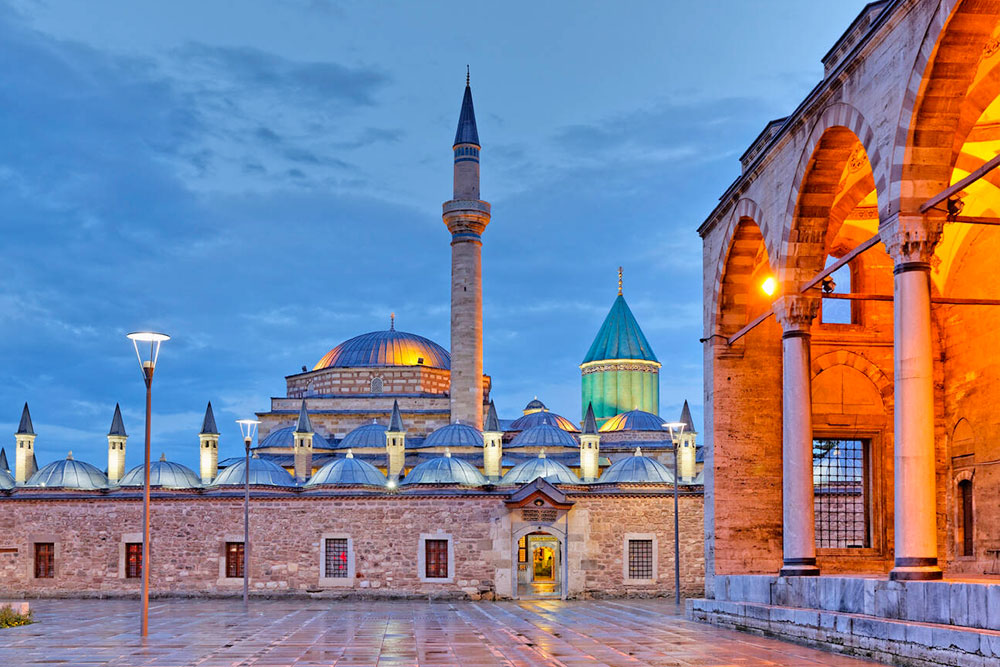
Konya is steeped in history and culture, making it a treasure trove for travelers eager to explore its rich heritage. Each attraction showcases architectural beauty and tells stories of the city’s past, reflecting its role as a center of Sufi mysticism and scholarship. Here are some must-visit sites that offer a glimpse into Konya’s soul.
1. Mevlana Museum
No trip to Konya is complete without a visit to the Mevlana Museum, the city's most significant cultural landmark. Once a lodge for the Mevlevi Order, founded by Rumi, the museum houses the mausoleum of the revered poet and mystic. As you enter, you’ll be greeted by the stunning green dome, an iconic symbol of Konya adorned with intricate tile work that represents the area's deep spiritual heritage.
Inside the museum, you can explore a rich collection of artifacts, including Rumi’s original manuscripts, ancient Quranic texts, and items used in Sufi ceremonies. Visitors often find themselves moved by the tranquil atmosphere and the spiritual resonance that fills the space. Guided tours are available, and many travelers recommend joining one to gain deeper insights into the significance of Rumi’s teachings and the history of the Mevlevi Order.
2. Alaeddin Mosque
Perched on Alaeddin Hill, the Alaeddin Mosque is one of the oldest mosques in Turkey, dating back to the 12th century. Its unique architectural style combines Seljuk and Ottoman elements, showcasing the evolution of Turkish architecture. The mosque features a beautiful courtyard lined with cypress trees, creating a serene environment for prayer and reflection.
Inside, the intricate woodwork and stunning stained glass windows are a feast for the eyes. Many travelers appreciate the peaceful ambiance, making it a perfect spot for quiet contemplation. The mosque is surrounded by Alaeddin Park, where you can enjoy a stroll among lush gardens and historical ruins. It’s a popular place for locals, making it an ideal spot to experience everyday life in Konya.
3. Karatay Medrese
For art lovers and history enthusiasts, the Karatay Medrese is a must-visit. This 13th-century theological school is renowned for its exquisite tile work and calligraphy, reflecting the high level of craftsmanship during the Seljuk period. As you enter, you’ll be captivated by the beautifully decorated courtyard and the intricate designs on the walls, which tell stories of Islamic art and culture.
The medrese also houses a small museum featuring artifacts related to Islamic science and art, including stunning examples of ceramics and illuminated manuscripts. Travelers often comment on the serene atmosphere, perfect for leisurely exploration and photography. The site serves as a reminder of Konya’s historical significance as a center of learning and culture.
4. Ince Minare Museum
Another gem in Konya is the Ince Minare Museum, in a former madrasa (Islamic school) built in the 13th century. This museum is famous for its remarkable minaret, which stands at a height of 50 feet (15 meters) and is adorned with intricate stone carvings. The museum showcases a collection of Seljuk artifacts, including wooden and stone carvings, ceramics, and calligraphy.
Many visitors enjoy wandering through the museum's exhibits, which highlight the artistic heritage of the Seljuk Turks. The museum's beautiful architecture and peaceful gardens make it an excellent place for relaxation and reflection. A knowledgeable guide can offer fascinating insights into the history and significance of the exhibits, enriching your experience.
5. The Sille Village
A short drive from the city center takes you to Sille, a historic village known for its picturesque landscape and rich history. Once a center of early Christianity, Sille is home to ancient rock churches, monasteries, and remnants of Byzantine architecture. Exploring the cobblestone streets of Sille provides a glimpse into traditional Turkish village life away from the bustling city.
Travelers often rave about the friendly locals and the chance to taste homemade Turkish dishes at small family-run restaurants. The village also offers beautiful hiking trails with stunning views of the surrounding countryside, making it one of the best destinations for nature lovers and those looking to escape the city's hustle and bustle.
6. Kizilkaya Park
If you’re seeking a place to unwind, Kizilkaya Park is a beautiful green space on Konya's outskirts. The park features picnic areas, walking paths, and stunning views of the nearby mountains. It’s an excellent spot for families and friends to relax and enjoy nature.
Travelers often recommend bringing a picnic and spending a leisurely afternoon in the park, enjoying the fresh air and scenic surroundings. The park is a popular retreat for locals, providing an authentic glimpse into daily life in Konya.
7. The Whirling Dervishes
Attending a Whirling Dervishes ceremony is essential to truly understand Konya’s spiritual significance. The Mevlevi Sema ceremony, a mesmerizing performance of Sufi music and dance, occurs regularly in various locations, including the Mevlana Cultural Center. Witnessing the dervishes whirl in their flowing white garments is a moving experience that offers a unique insight into Sufi traditions and the teachings of Rumi.
Travelers often describe the atmosphere as ethereal and transcendent, with music and dance as a form of meditation and spiritual connection. Many visitors suggest attending a ceremony as it provides a deeper understanding of the cultural significance of Rumi’s teachings and the philosophy of the Mevlevi Order.
Exploring the must-visit attractions in Konya is an enriching experience that connects travelers to the city’s vibrant heritage and spiritual legacy. Each site tells a story, revealing the unique history and culture that define Konya. By immersing yourself in these attractions, you’ll learn about the city’s past and better appreciate its place in Turkey’s cultural landscape. Explore exciting things to do in Turkey! Click now for a guide to unforgettable adventures and must-see attractions nationwide.
Savor Konya’s Traditional Cuisine
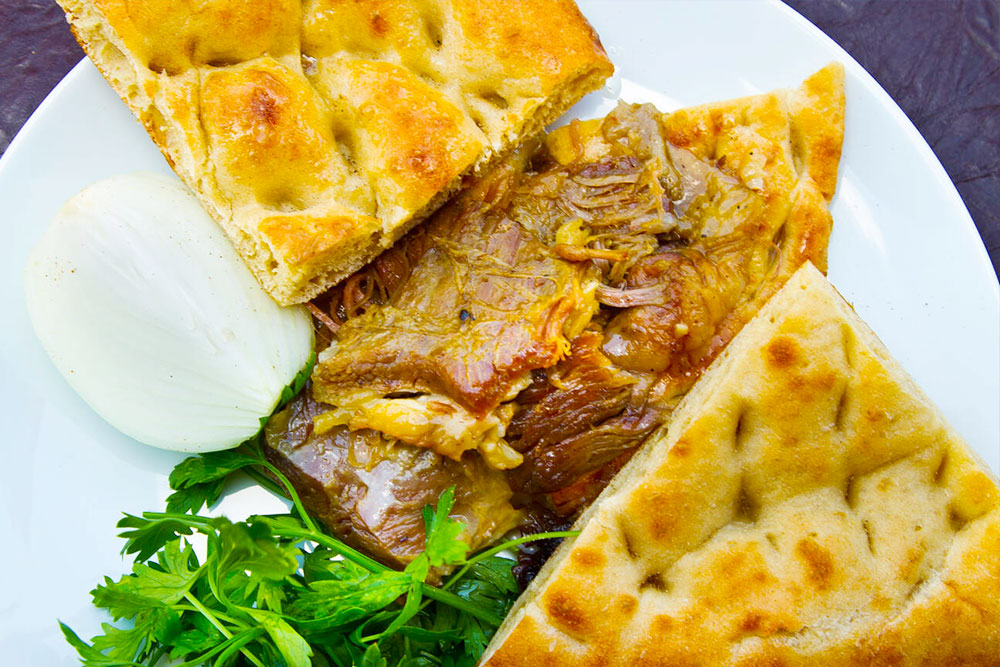
Exploring Konya is not just about its historical landmarks and cultural experiences; it’s also a culinary journey that offers a taste of the region’s rich gastronomic heritage. Konya’s traditional cuisine is deeply rooted in its history and agricultural practices, making it unique in Turkish cuisine. Here, we’ll explore some of the must-try dishes, popular eateries, and local specialties every traveler should experience while visiting Konya.
1. Etli Ekmek
One of Konya's most iconic dishes is Etli Ekmek, a savory flatbread topped with minced meat, onions, and a blend of spices. This delicious dish is often compared to Turkish pizza but has its distinct flavor and preparation method. The dough is rolled thin and baked in a stone oven, giving it a crispy texture that complements the flavorful topping.
To experience the best Etli Ekmek in Konya, head to Saray Restaurant, which has been serving locals and visitors alike for generations. Their version is renowned for its generous toppings and the perfect balance of spices. Many travelers rave about the restaurant's ambiance, which reflects the traditional Turkish dining experience. Order an authentic experience with a side of Ayran, a refreshing yogurt-based drink that perfectly complements the dish's richness.
2. Tandir Kebab
Another culinary gem to savor is Tandir Kebab, a traditional dish featuring succulent pieces of lamb or beef slow-cooked in a clay oven. This cooking method allows the meat to become incredibly tender and infused with flavor. Tandir Kebab is typically served with rice, fresh vegetables, and a tangy yogurt sauce.
Kebapçi iskender is a must-visit restaurant for Tandir Kebab. Skilled chefs prepare the dish using age-old techniques. Guests often appreciate the welcoming atmosphere and the opportunity to watch the preparation process. The restaurant is mainly known for its generous portions, ensuring you leave satisfied after indulging in this hearty meal.
3. Mevlana Börek
No culinary exploration of Konya would be complete without trying Mevlana Börek. This flaky pastry, filled with various ingredients such as cheese, minced meat, or spinach, is named after the famous poet Rumi (Mevlana). The pastry is baked to golden perfection and is often served hot, making it a popular snack or appetizer among locals.
You can find Mevlana Börek in many bakeries and cafes throughout the city, but Hüseyin Usta is particularly renowned for its quality and taste. Visitors frequently comment on the light, crispy texture of the pastry and the delicious fillings. Enjoying a slice of Börek with a cup of Turkish tea is a delightful experience that captures the essence of Konya’s culinary traditions.
4. Firin Kebabi
A lesser-known yet equally delicious dish is Firin Kebabi, a baked lamb dish prepared with aromatic spices and vegetables. This dish is traditionally cooked in a wood-fired oven, allowing the flavors to meld beautifully. The result is tender meat served alongside a medley of seasonal vegetables, creating a wholesome meal.
Travelers often recommend trying Firin Kebabi at Özlem Restaurant, known for its commitment to using fresh, locally sourced ingredients. The restaurant's inviting atmosphere and attentive service make it a perfect spot for enjoying this comforting dish with friends or family.
5. Konya Pide
Another local favorite is Konya Pide, a boat-shaped flatbread with various toppings, including minced meat, cheese, and vegetables. The dough is stretched thin and baked in a stone oven, producing a crispy crust with a soft interior. Each pide is uniquely crafted; you can customize your toppings to suit your taste.
For an authentic experience, visit shefik Usta Pide, a local establishment renowned for its delicious Pide. Travelers often rave about the quality of the ingredients and the attentive service. Be sure to pair your pide with a refreshing glass of shalgam, a fermented turnip juice popular in the region.
6. Sweets and Desserts
After enjoying the savory delights, indulge your sweet tooth with traditional Turkish desserts. Baklava, a sweet pastry made of layers of filo dough, nuts, and honey syrup, is a must-try. Konya’s baklava is known for its quality and richness, often served in generous portions at local pastry shops.
Dondurma, or Turkish ice cream, is another favorite among locals and tourists. This unique ice cream is stretchy and chewy, thanks to the addition of salep, a flour made from the tuber of orchids. You can find Dondurma vendors throughout the city, who often perform entertaining tricks while serving cones to customers.
7. Local Markets and Street Food
For a truly immersive culinary experience, visit Konya’s vibrant local markets. The Tarish Market is a great place to explore various stalls selling fresh produce, spices, nuts, and regional delicacies. Engage with friendly vendors who are often eager to share their stories and recommend products.
Street food is also an integral part of Konya’s culinary scene. Be sure to try Simit, a sesame-encrusted bread that makes for a perfect snack on the go. Kumpir, a baked potato stuffed with various toppings, is another popular street food option that travelers enjoy.
8. Culinary Workshops and Classes
Those who want to delve deeper into Konya’s culinary culture should consider participating in a cooking class or culinary workshop. Several local chefs offer classes where you can prepare traditional dishes like Etli Ekmek and Mevlana Börek. This hands-on experience allows you to connect with the local culture while mastering new culinary skills.
Respect Cultural Etiquette in Konya
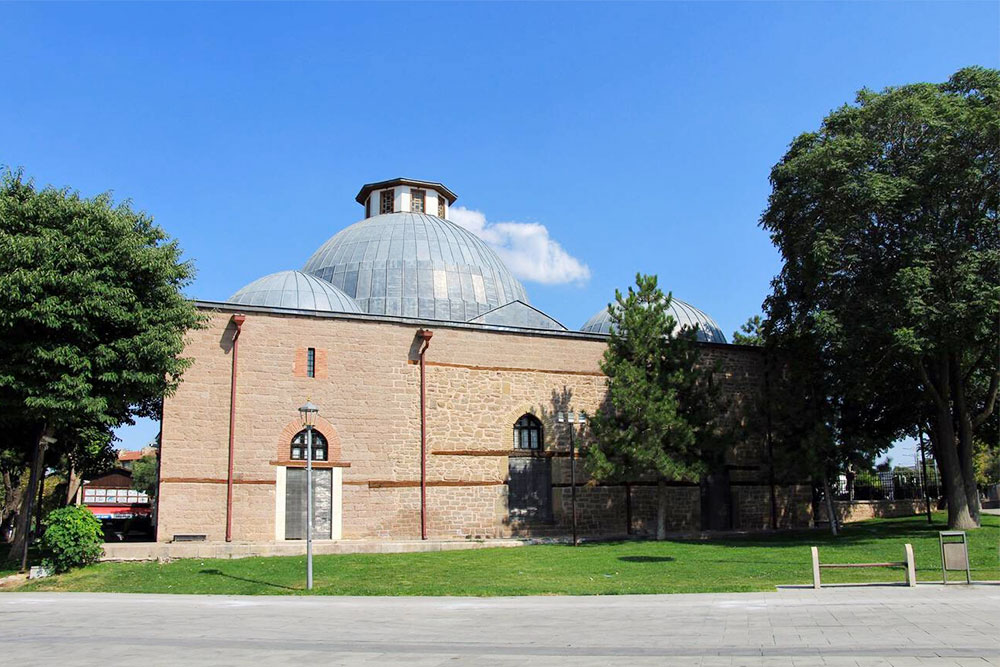
Visiting Konya offers a unique opportunity to immerse yourself in a city rich in history and tradition. As one of Turkey's cultural hubs, Konya has a distinct set of customs and etiquette that travelers should know to ensure respectful and enriching interactions with locals. Understanding these cultural norms enhances your travel experience and demonstrates respect for the city's heritage and people.
1. Greetings and Politeness
When meeting someone in Konya, a warm handshake is the standard greeting. However, it’s important to note that many locals, especially women, may prefer a nod or a smile instead of physical contact. Always greet people with a polite "Merhaba" (Hello) or "Selam" (Greetings), accompanied by a smile. This small gesture goes a long way in building rapport and showing respect.
Standing when someone enters the room is customary in formal settings or when meeting elders. Additionally, using titles such as “Bey” for Mr. and “Hanim” for Mrs. when addressing people shows respect and acknowledges their status.
2. Dress Code
Konya is known for its conservative values, reflecting its religious heritage and cultural traditions. While the city welcomes tourists, it’s essential to dress modestly, especially when visiting religious sites like mosques and shrines. For women, this means wearing clothing that covers the shoulders and knees, and it’s advisable to bring a scarf to cover your head when entering a mosque. Men should avoid wearing shorts in religious places and opt for long trousers.
When dining in local restaurants or visiting homes, dressing smartly is appreciated. Although casual attire is acceptable in most tourist areas, dressing nicely shows respect for the local culture.
3. Visiting Mosques and Religious Sites
Konya has several significant religious sites, including the Mevlana Museum and the Alaeddin Mosque. When visiting these places, be sure to observe the following etiquette:
- Remove Shoes: It is customary to remove your shoes before entering a mosque's prayer hall. Many mosques provide plastic bags in which you can carry your shoes.
- Quiet Respect: Many locals come to pray or reflect, so maintain respectful silence while inside. It’s important to be mindful of your surroundings and avoid loud conversations or disruptive behavior.
- Photography: Always check for signs indicating whether photography is allowed, especially during prayer times. If in doubt, ask a staff member for permission.
- Personal Space: Be aware of personal space, particularly during prayer times. Avoid walking in front of someone who is praying, as it can be considered disrespectful.
4. Dining Etiquette
Food plays a significant role in Turkish culture, and sharing a meal is often seen as a gesture of hospitality. When invited to someone's home, it’s customary to bring a small gift, such as sweets or flowers, to express gratitude for the invitation.
When dining out in Konya:
- Wait for the Host: If you’re invited to a meal, wait for your host to start eating before you begin. This is a sign of respect for the person who prepared the meal.
- Use the Right Hand: Eating with the right hand is traditionally preferred, as the left hand is considered unclean. If you're dining with locals, observe their practices and follow suit.
- Compliment the Food: Expressing appreciation for the meal is a polite gesture. Saying “Afiyet olsun!” (May it be good health!) is a common phrase to wish fellow diners to enjoy their meal.
5. Engaging with Locals
The people of Konya are known for their warmth and hospitality. Engaging in conversation with locals can enhance your travel experience. Here are some tips for meaningful interactions:
- Show Interest in Culture: Locals often appreciate visitors' genuine interest in their culture and traditions. Asking questions about local customs, cuisine, or history can lead to enriching conversations.
- Avoid Controversial Topics: While discussing culture and traditions is welcomed, be cautious about diving into sensitive topics such as politics or religion, as these can vary widely in opinion and may cause discomfort.
- Learning Basic Turkish Phrases: Learning a few basic Turkish phrases can significantly enhance your interactions. Simple greetings, thank you ("Teshekkür ederim"), and please ("Lütfen") can go a long way in bridging cultural gaps.
6. Observing Religious Practices
Konya is a city where religious practices are deeply integrated into daily life. Respecting these practices is crucial. For example, during Ramadan, many locals fast from dawn until sunset. While you might not be expected to fast, it’s courteous to refrain from eating or drinking in public during daylight hours.
Attending a Whirling Dervishes ceremony is an exceptional way to engage with the city's spiritual aspect. These performances are a form of worship, and showing respect by remaining quiet and attentive is essential.
7. Festivals and Celebrations
Participating in local festivals and celebrations can provide unique insights into Konya’s culture. Events like the Mevlana Festival draw large crowds and showcase traditional music, dance, and poetry. When attending such events, embrace the festive spirit and engage with locals by joining in the celebrations.
It's important to be aware of cultural customs during festivals. For example, when listening to Sufi music or watching Whirling Dervishes performances, it’s customary to remain silent and attentive, allowing the atmosphere to envelop you.
Navigate Easily: Transportation Tips for Konya
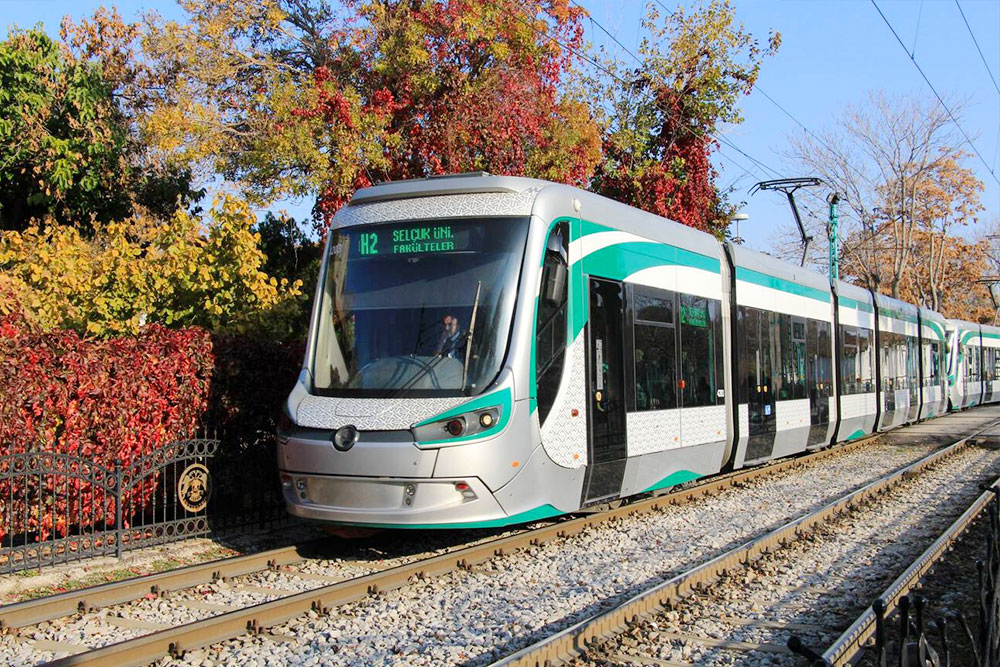
Navigating the beautiful city of Konya can be an enjoyable experience, thanks to its well-organized transportation system and relatively compact layout. Whether you prefer public transportation, taxis, or exploring on foot, this section provides essential tips and insights to help you navigate the city with ease and confidence.
1. Understanding Public Transportation
Konya boasts an efficient public transportation system that includes buses, trams, and dolmush (shared minibusses). Each mode of transportation offers a convenient way to explore the city while allowing you to immerse yourself in local life.
Buses
The city’s bus network is extensive, covering most areas of Konya. Buses are frequent and reliable, making them an excellent option for getting around.
- Bus Stops: Most bus stops are marked with clear signage indicating routes and schedules. To navigate the route names, it’s beneficial to have a translation app or a basic understanding of Turkish.
- Tickets: You can purchase bus tickets from kiosks near bus stops or use a rechargeable transportation card called a Konya Kart. This card can be used for buses and trams, making it a convenient choice for travelers. Be sure to load it with sufficient credit before boarding.
Trams
The tram system in Konya is another efficient mode of transportation, especially for routes connecting major attractions and neighborhoods.
- Routes: The main tram line runs from the city center to the university area, passing by popular destinations like the Mevlana Museum and Alaeddin Hill. Trams are punctual and comfortable.
- Fares: Similar to buses, fares can be paid with a Konya Kart. Make sure to validate your ticket upon boarding.
Dolmush (Shared Minibuses)
For a more localized experience, consider using dolmush. These shared minibusses operate on fixed routes and are a standard mode of transport among locals.
- Convenience: Dolmush vehicles can be flagged down quickly and are often more flexible than buses or trams in terms of stops. Inform the driver of your destination, and they will tell you when to leave.
- Cost: Fares are generally low, and you can pay directly to the driver. Be sure to have small bills or changes, as drivers may not always provide changes for more extensive notes.
2. Taxis and Ride-Sharing Services
If you prefer a more direct and private mode of transportation, taxis are widely available throughout Konya.
- Taxi Fares: Taxi in Konya operate on a meter, and rates are reasonable compared to many other cities. Confirming that the meter is running when you start your journey is advisable. For longer distances, discussing the fare in advance can avoid any misunderstandings.
- Ride-sharing apps: While traditional taxis are prevalent, ride-sharing services like BiTaksi are also gaining popularity. These apps provide an easy way to book a ride and often include fare estimates upfront.
3. Walking and Biking
Konya’s city center is relatively compact, making it an ideal place for walking or biking.
- Walking: Strolling through the city lets you soak in the atmosphere, discover hidden gems, and interact with locals. Popular pedestrian areas include Alaeddin Hill, where you can enjoy lush gardens, and Mevlana Street, lined with shops and cafes.
- Biking: Konya offers bike rental services for those who enjoy cycling. Many locals use bicycles for short trips, and the city is increasingly becoming bike-friendly with designated lanes. Riding a bike is a fantastic way to explore parks and quieter neighborhoods at your own pace.
4. Navigating Major Attractions
Knowing how to get to key attractions can enhance your experience in Konya. Here are some popular destinations and transportation options to reach them:
Mevlana Museum
- By Tram: The easiest way to the Mevlana Museum is to take the tram. Take the tram line toward the university area and get off at the Mevlana stop.
- Walking: If you're in the city center, it's about a 15-minute walk to the museum, making it an enjoyable stroll through the vibrant streets.
Alaeddin Hill
- By Bus: Several buses stop near Alaeddin Hill, making it easily accessible from various parts of the city.
- On Foot: Located centrally, it's also within walking distance from many key areas. The park is a popular spot for locals to relax, making it a pleasant visit.
Karatay Medrese
- By Tram or Dolmush: The Karatay Medrese, known for its exquisite tile work, is conveniently accessible from the city center via tram or dolmush.
5. Driving in Konya
If you prefer the flexibility of driving, renting a car can be an option, especially for excursions outside the city to nearby attractions like Catalhoyuk or Sille.
- Parking: Parking is generally available in designated areas, though finding a spot in the city center can be challenging. Be aware of local parking regulations to avoid fines.
- Navigating: Ensure you have a GPS or a reliable map, as road signs may primarily be in Turkish. Driving in Konya can differ from what you’re used to in the U.S., so exercise caution and be aware of local driving customs.
6. Local Tips for Easy Navigation
- Download Navigation Apps: Consider downloading navigation apps like Google Maps or local apps that provide real-time public transport updates. They can help you plan your routes and avoid any confusion.
- Learn Basic Directions: Familiarize yourself with basic directional terms in Turkish, such as "sol" (left), "sag" (right), and "düz" (straight). This can be incredibly helpful when asking for directions.
- Ask Locals: Ask locals for help if you're unsure about directions or transportation options. Konya residents are known for their hospitality and are usually more than willing to assist travelers.
Stay Connected: Useful Apps for Travelers
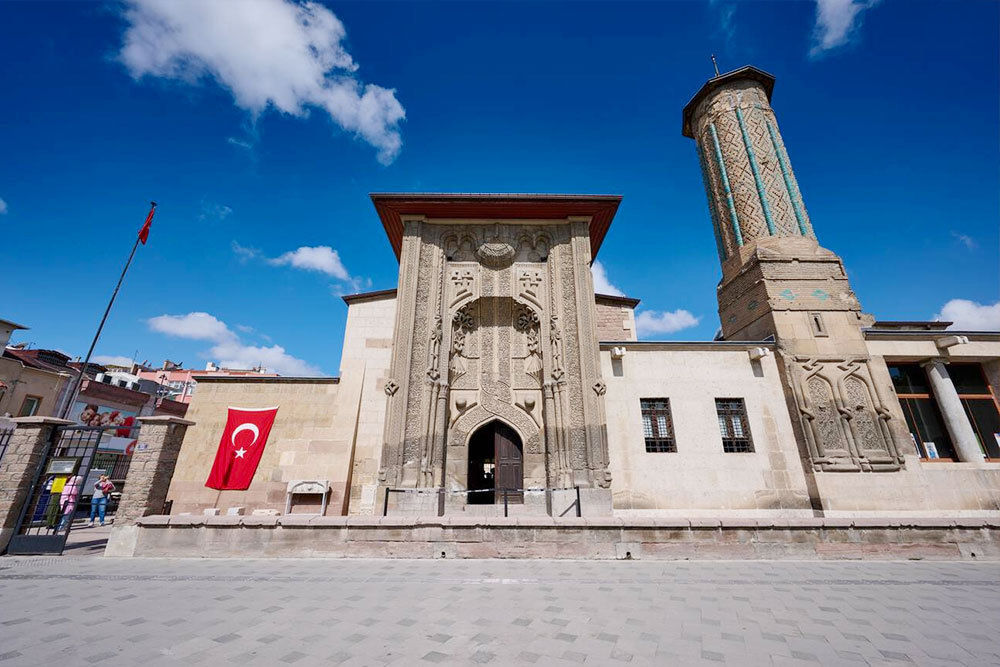
Traveling to Konya is an enriching experience, blending traditional charm with vibrant culture. The city offers a safe environment for tourists, with its friendly locals and iconic landmarks like the Mevlana Museum. However, ensuring a secure and enjoyable trip requires a mix of preparation and awareness. Understanding local customs, taking personal safety precautions, and being mindful of transportation and health concerns will help you immerse yourself in the beauty of Konya while staying protected.
Before visiting, familiarize yourself with Konya's cultural and legal norms. The city, known for its conservative values, appreciates modest attire, particularly at religious sites. Dressing appropriately and respecting photography etiquette ensures you leave a positive impression. Understanding local laws, such as restrictions on public drinking or smoking, will prevent unintended missteps. These efforts contribute to a smoother and more respectful travel experience.
Personal safety measures should also be a priority. While Konya is generally safe, precautions like keeping valuables secure and staying vigilant in crowded areas can safeguard your belongings. Additionally, trusting your instincts in uncomfortable situations is crucial. Choosing reputable transportation options, like licensed taxis or trusted ride-sharing apps, and being cautious on public transport will enhance your peace of mind.
Lastly, staying healthy and prepared for emergencies is essential. Ensure you have a list of emergency contacts, stay hydrated, and consider travel insurance to cover unexpected incidents. By taking these steps, you can confidently explore Konya, enjoying its hospitality and cultural richness while keeping your safety at the forefront.
Stay Safe While Enjoying Konya
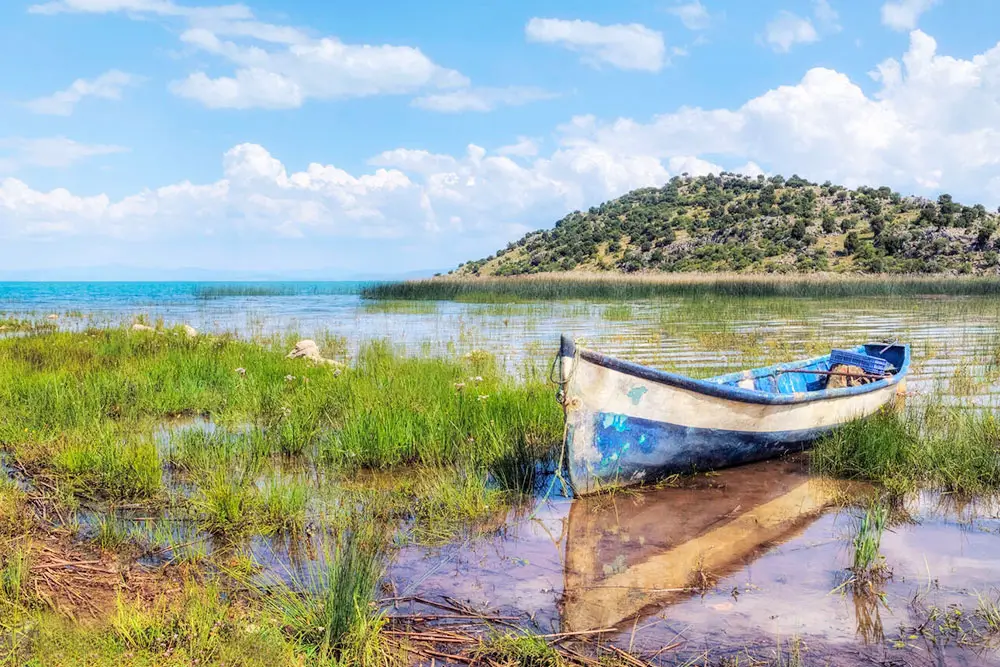
Traveling to Konya can be an enriching experience, filled with stunning architecture, vibrant culture, and friendly locals. As a generally safe city for tourists, Konya offers a unique glimpse into Turkey’s cultural and historical heritage. However, being prepared and aware of safety tips can help ensure a smooth and enjoyable trip. From understanding local customs to navigating transportation, taking precautions can help you make the most of your adventure in this fascinating city.
Respecting local traditions and understanding Turkish customs can significantly enhance your experience. Konya’s conservative values, rooted in its religious significance, mean that dressing modestly is important, particularly when visiting landmarks like the Mevlana Museum or mosques. Additionally, learning basic photography etiquette—such as asking permission before taking pictures of locals—can help you interact respectfully. Awareness of local laws, such as restrictions on public alcohol consumption and smoking in designated areas, will also help you avoid unintentional breaches of protocol.
Personal safety is another key aspect to consider while visiting Konya. Though the city is considered safe, general precautions like keeping valuables hidden and staying vigilant in crowded areas are important. Opt for crossbody bags or money belts to secure your belongings and avoid attracting unwanted attention. Trusting your instincts in uncomfortable situations is essential, as is maintaining situational awareness in bustling markets or public spaces. These habits will help protect you and your possessions, allowing you to focus on exploring.
Transportation in Konya is convenient, but ensuring your safety requires a few mindful steps. Stick to reputable transport services such as licensed taxis or ride-sharing apps like BiTaksi. Public transport, while generally safe, can be crowded during peak hours, so consider traveling during less busy times. Securing your belongings and using reliable transport options will help you navigate the city confidently. By combining these tips with health precautions and emergency preparedness, you’ll be set for a safe and unforgettable journey in Konya.
Embracing the Spiritual Journey in Konya
Konya is a treasure trove of culture, history, and spirituality, waiting to be explored by adventurous travelers. By understanding the best times to visit, the must-see attractions, and local customs, you can enrich your journey and create lasting memories. So, pack your bags and prepare to embark on a journey that promises to engage your senses and uplift your spirit.
What will you discover in the spiritual heart of Turkey?

